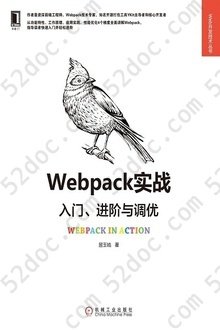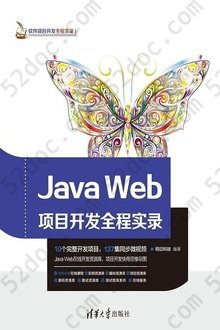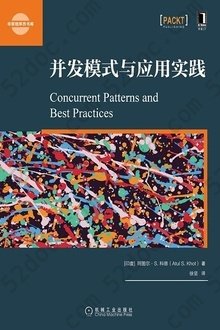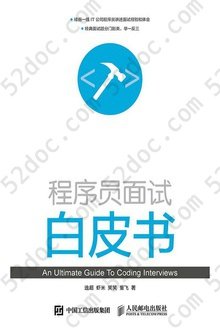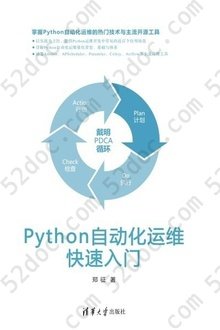注重体验与质量的电子书资源下载网站
分类于: 编程语言 计算机基础
简介
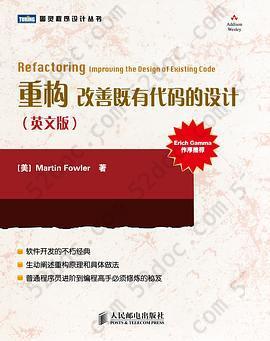
重构: 英文版 豆 8.8分
资源最后更新于 2020-08-19 16:09:07
作者:[美] Martin Fowler
出版社:人民邮电出版社
出版日期:2010-01
ISBN:9787115239143
文件格式: pdf
标签: 重构 软件设计 软件开发 软件工程 编程 计算机科学 programming IT
简介· · · · · ·
重构,一言以蔽之,就是在不改变外部行为的前提下,有条不紊地改善代码。多年前,正是本书原版的出版,使重构终于从编程高手们的小圈子走出,成为众多普通程序员日常开发工作中不可或缺的一部分。本书也因此成为与《设计模式》齐名的经典著作,被译为中、德、俄、日等众多语言,在世界范围内畅销不衰。
本书凝聚了软件开发社区专家多年摸索而获得的宝贵经验,拥有不因时光流逝而磨灭的价值。今天,无论是重构本身,业界对重构的理解,还是开发工具对重构的支持力度,都与本书最初出版时不可同日而语,但书中所蕴涵的意味和精华,依然值得反复咀嚼,而且往往能够常读常新。
目录
Chapter 1 Refactoring, a First Example 1
The Starting Point 1
The First Step in Refactoring 7
Decomposing and Redistributing the Statement Method 8
Replacing the Conditional Logic on Price Code with Polymorphism 34
Final Thoughts 52
Chapter 2: Principles in Refactoring 53
Defining Refactoring 53
Why Should You Refactor 55
When Should You Refactor 57
What Do I Tell My Manager 60
Problems with Refactoring 62
Refactoring and Design 66
Refactoring and Performance 69
Where Did Refactoring Come From 71
Chapter 3: Bad Smells in Code (by Kent Beck and Martin Fowler) 75
Duplicated Code 76
Long Method 76
Large Class 78
Long Parameter List 78
Divergent Change 79
Shotgun Surgery 80
Feature Envy 80
Data Clumps 81
Primitive Obsession 81
Switch Statements 82
Parallel Inheritance Hierarchies 83
Lazy Class 83
Speculative Generality 83
Temporary Field 84
Message Chains 84
Middle Man 85
Inappropriate Intimacy 85
Alternative Classes with Different Interfaces 85
Incomplete Library Class86
Data Class 86
Refused Bequest 87
Comments 87
Chapter 4: Building Tests 89
The Value of Self-testing Code 89
The JUnit Testing Framework 91
Adding More Tests 97
Chapter 5: Toward a Catalog of Refactorings
Format of the Refactorings~103
Finding References 105
How Mature Are These Refactorings 106
Chapter 6: Composing Methods 109
Extract Method 110
Inline Method 117
Inline Temp 119
Replace Temp with Query 120
Introduce Explaining Variable 124
Split Temporary Variable 128
Remove Assignments to Parameters 131
Replace Method with Method Object 135
Substitute Algorithm 139
Chapter 7: Moving Features Between Objects 141
Move Method 142
Move Field 146
Extract Class 149
Inline Class 154
Hide Delegate 157
Remove Middle Man 160
Introduce Foreign Method 162
Introduce Local Extension 164
Chapter 8: Organizing Data 169
Self Encapsulate Field 171
Replace Data Value with Object 175
Change Value to Reference 179
Change Reference to Value 183
Replace Array with Object 186
Duplicate Observed Data 189
Change Unidirectional Association to Bidirectional 197
Change Bidirectional Association to Unidirectional 200
Replace Magic Number with Symbolic Constant 204
Encapsulate Field 206
Encapsulate Collection 208
Replace Record with Data Class 217
Replace Type Code with Class 218
Replace Type Code with Subclasses 223
Replace Type Code with State/Strategy 227
Replace Subclass with Fields 232
Chapter 9: Simplifying Conditional Expressions .237
Decompose Conditional 238
Consolidate Conditional Expression 240
Consolidate Duplicate Conditional Fragments 243
Remove Control Flag 245
Replace Nested Conditional with Guard Clauses 250
Replace Conditional with Polymorphism 255
Introduce Null Object 260
Introduce Assertion 267
Chapter 10: Making Method Calls Simpler 271
Rename Method 273
Add Parameter 275
Remove Parameter 277
Separate Query from Modifier 279
Parameterize Method 283
Replace Parameter with Explicit Methods 285
Preserve Whole Object 288
Replace Parameter with Method 292
Introduce Parameter Object 295
Remove Setting Method 300
Hide Method 303
Replace Constructor with Factory Method 304
Encapsulate Downcast 308
Replace Error Code with Exception 310
Replace Exception with Test 315
Chapter 11: Dealing with Generalization319
Pull Up Field 320
Pull Up Method 322
Pull Up Constructor Body 325
Push Down Method 328
Push Down Field 329
Extract Subclass 330
Extract Superclass 336
Extract Interface 341
Collapse Hierarchy 344
Form Template Method 345
Replace Inheritance with Delegation 352
Replace Delegation with Inheritance 355
Chapter 12: Big Refactorings (by Kent Beck and Martin Fowler) 359
Tease Apart Inheritance 362
Convert Procedural Design to Objects 368
Separate Domain from Presentation 370
Extract Hierarchy 375
Chapter 13: Refactoring, Reuse, and Reality (by William Opdyke) 379
A Reality Check 380
Why Are Developers Reluctant to Refactor
Their Programs 381
A Reality Check (Revisited) 394
Resources and References for Refactoring 394
Implications Regarding Software Reuse and Technology Transfer 395
A Final Note397
References 397
Chapter 14: Refactoring Tools (by Don Roberts and John Brant) 401
Refactoring with a Tool 401
Technical Criteria for a Refactoring Tool 403
Practical Criteria for a Refactoring Tool 405
Wrap Up 407
Chapter 15: Putting It All Together (by Kent Beck) 409
References 413
List of Soundbites 417
Index 419
The Starting Point 1
The First Step in Refactoring 7
Decomposing and Redistributing the Statement Method 8
Replacing the Conditional Logic on Price Code with Polymorphism 34
Final Thoughts 52
Chapter 2: Principles in Refactoring 53
Defining Refactoring 53
Why Should You Refactor 55
When Should You Refactor 57
What Do I Tell My Manager 60
Problems with Refactoring 62
Refactoring and Design 66
Refactoring and Performance 69
Where Did Refactoring Come From 71
Chapter 3: Bad Smells in Code (by Kent Beck and Martin Fowler) 75
Duplicated Code 76
Long Method 76
Large Class 78
Long Parameter List 78
Divergent Change 79
Shotgun Surgery 80
Feature Envy 80
Data Clumps 81
Primitive Obsession 81
Switch Statements 82
Parallel Inheritance Hierarchies 83
Lazy Class 83
Speculative Generality 83
Temporary Field 84
Message Chains 84
Middle Man 85
Inappropriate Intimacy 85
Alternative Classes with Different Interfaces 85
Incomplete Library Class86
Data Class 86
Refused Bequest 87
Comments 87
Chapter 4: Building Tests 89
The Value of Self-testing Code 89
The JUnit Testing Framework 91
Adding More Tests 97
Chapter 5: Toward a Catalog of Refactorings
Format of the Refactorings~103
Finding References 105
How Mature Are These Refactorings 106
Chapter 6: Composing Methods 109
Extract Method 110
Inline Method 117
Inline Temp 119
Replace Temp with Query 120
Introduce Explaining Variable 124
Split Temporary Variable 128
Remove Assignments to Parameters 131
Replace Method with Method Object 135
Substitute Algorithm 139
Chapter 7: Moving Features Between Objects 141
Move Method 142
Move Field 146
Extract Class 149
Inline Class 154
Hide Delegate 157
Remove Middle Man 160
Introduce Foreign Method 162
Introduce Local Extension 164
Chapter 8: Organizing Data 169
Self Encapsulate Field 171
Replace Data Value with Object 175
Change Value to Reference 179
Change Reference to Value 183
Replace Array with Object 186
Duplicate Observed Data 189
Change Unidirectional Association to Bidirectional 197
Change Bidirectional Association to Unidirectional 200
Replace Magic Number with Symbolic Constant 204
Encapsulate Field 206
Encapsulate Collection 208
Replace Record with Data Class 217
Replace Type Code with Class 218
Replace Type Code with Subclasses 223
Replace Type Code with State/Strategy 227
Replace Subclass with Fields 232
Chapter 9: Simplifying Conditional Expressions .237
Decompose Conditional 238
Consolidate Conditional Expression 240
Consolidate Duplicate Conditional Fragments 243
Remove Control Flag 245
Replace Nested Conditional with Guard Clauses 250
Replace Conditional with Polymorphism 255
Introduce Null Object 260
Introduce Assertion 267
Chapter 10: Making Method Calls Simpler 271
Rename Method 273
Add Parameter 275
Remove Parameter 277
Separate Query from Modifier 279
Parameterize Method 283
Replace Parameter with Explicit Methods 285
Preserve Whole Object 288
Replace Parameter with Method 292
Introduce Parameter Object 295
Remove Setting Method 300
Hide Method 303
Replace Constructor with Factory Method 304
Encapsulate Downcast 308
Replace Error Code with Exception 310
Replace Exception with Test 315
Chapter 11: Dealing with Generalization319
Pull Up Field 320
Pull Up Method 322
Pull Up Constructor Body 325
Push Down Method 328
Push Down Field 329
Extract Subclass 330
Extract Superclass 336
Extract Interface 341
Collapse Hierarchy 344
Form Template Method 345
Replace Inheritance with Delegation 352
Replace Delegation with Inheritance 355
Chapter 12: Big Refactorings (by Kent Beck and Martin Fowler) 359
Tease Apart Inheritance 362
Convert Procedural Design to Objects 368
Separate Domain from Presentation 370
Extract Hierarchy 375
Chapter 13: Refactoring, Reuse, and Reality (by William Opdyke) 379
A Reality Check 380
Why Are Developers Reluctant to Refactor
Their Programs 381
A Reality Check (Revisited) 394
Resources and References for Refactoring 394
Implications Regarding Software Reuse and Technology Transfer 395
A Final Note397
References 397
Chapter 14: Refactoring Tools (by Don Roberts and John Brant) 401
Refactoring with a Tool 401
Technical Criteria for a Refactoring Tool 403
Practical Criteria for a Refactoring Tool 405
Wrap Up 407
Chapter 15: Putting It All Together (by Kent Beck) 409
References 413
List of Soundbites 417
Index 419



